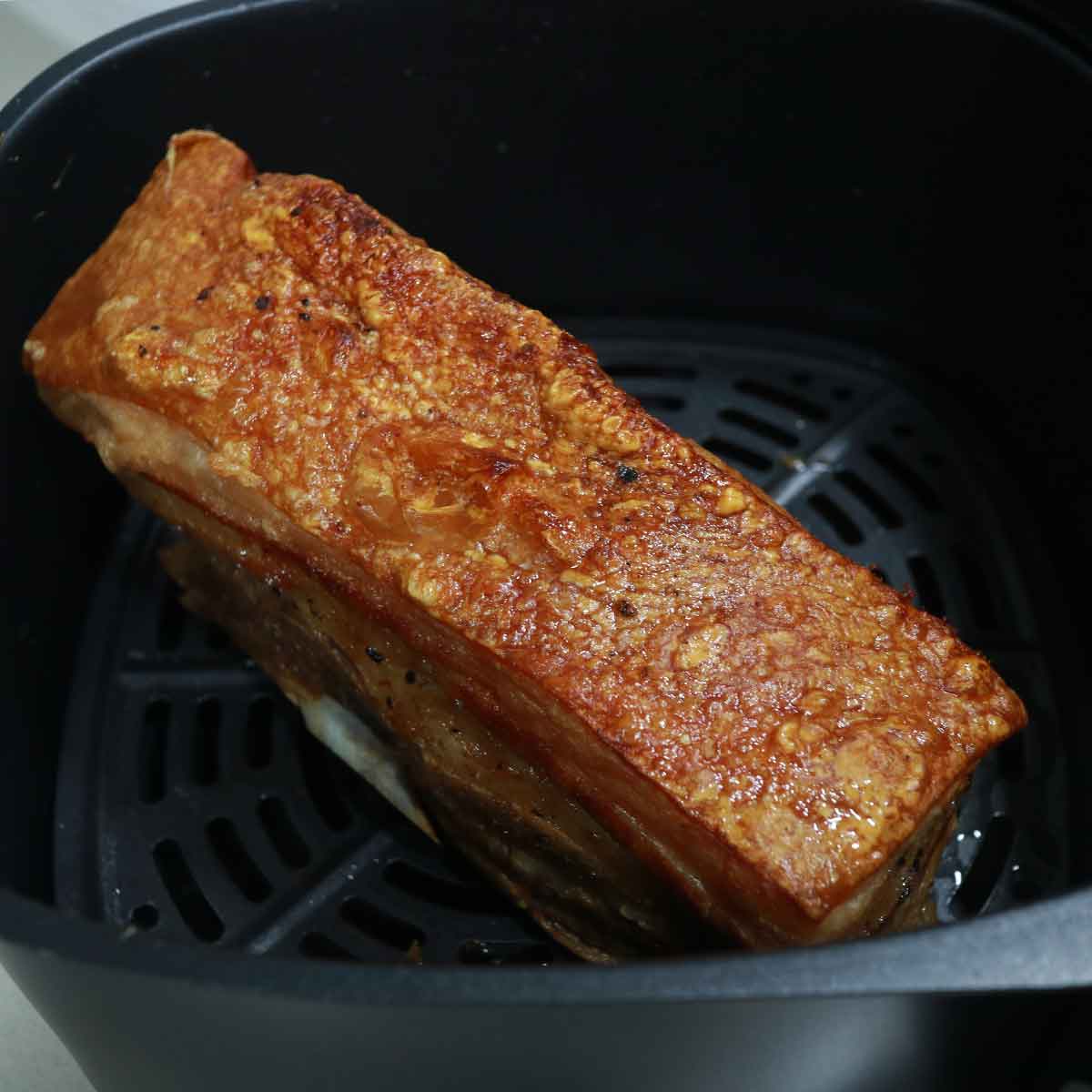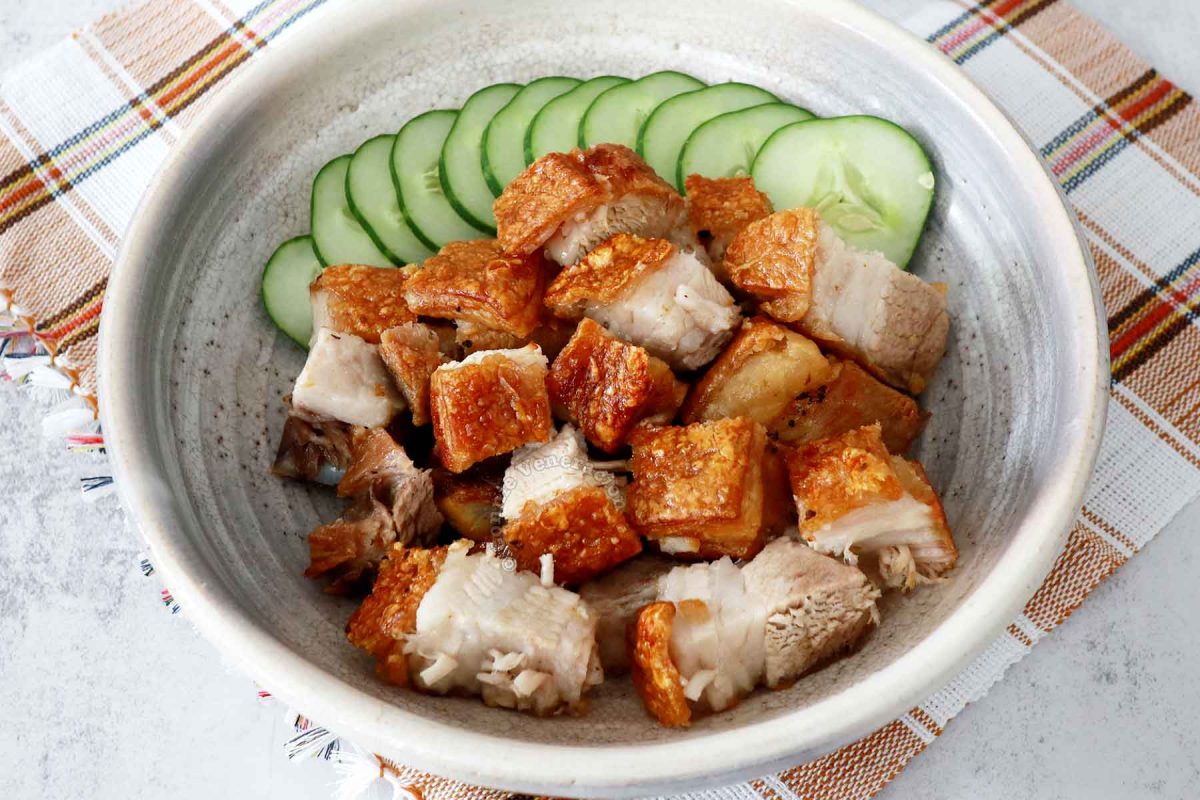I’m a recent air fryer convert. For the longest time, I resisted buying one despite my daughters’ pleas. My reason? There’s nothing that an air fryer can do that an oven can’t. And we have two ovens. So, an air fryer always seemed superfluous.
Then, my younger daughter, Alex, delivered the ultimate sales talk. You don’t need to preheat an air fryer, she said. And my perspective changed. During preheating, an oven guzzles up electricity. And there are times when preheating takes longer than actual cooking. I caved in. And it’s a decision I haven’t regretted.
We used to cook crispy pork belly in the oven. For over a decade, that was how we did it. Simmer a slab of meat on the stovetop then lay it on a rack positioned over a baking tray. It went into a very hot oven and we just waited for the skin to blister and turn into crackling. The result was always superb. But, in summer days, the heat that escaped from the oven turned the house into a bigger oven.
An air fryer is much smaller than a regular-sized oven. And because it does not need to be preheated, there’s a lot less stored heat in the house afterwards. That means we can have crispy pork belly more often.
So, how do we cook lechon kawali in an air fryer? The first stage has not changed. The pork belly is simmered in highly salted water with spices that include shallots, ginger, garlic, cracked peppercorns, bay leaves and, when available, lemongrass. When the pork is tender and the meat is literally falling apart, it’s ready for the air fryer.

No cooling and drying? Well, the pork is scooped out and left to drain on a rack for ten to fifteen minutes — just long enough to allow the meat juices to settle and stabilize. I do not believe in letting the meat dry for hours or, worse, under the sun. That’s like donating our meal to stray cats that roam the neighborhood.
Once the pork belly has dripped sufficiently, it goes into the air fryer. Now, here lies the difference. Inside an oven, especially a fan-assisted oven, with the top and bottom heat on, the pork belly will brown evenly with no need to turn it around. An air fryer has only once source of heat and it’s on the top. While that may be sufficient to make the skin crisp as crackling, the sides of the pork won’t brown enough to lose the texture of boiled meat.

In the air fryer, to brown every inch of the surface of the pork belly, the roasting has to be interrupted to turn the pork belly on its side. Both sides. By doing that, the browning becomes even.
So, the procedure is to allow the skin to brown and blister first before turning the pork belly on its side? Well, partially. The pork belly is initially roasted with the skin side up for seven minutes to remove moisture from the skin. That makes it easier to turn it into crackling later.

The belly is turned on one side and cooked for five minutes, it’s turned on its other side and cooked for another five minutes then it’s repositioned with the skin side up and cooked for another ten to twelve minutes. It is during the last stage that the skin puffs beautifully. Tap it and you will actually feel and hear how crisp it is.
Air fried lechon kawali (crispy pork belly)

Equipment
- Air fryer
Ingredients
Instructions
- Place the pork belly in a deep pan or pot and pour in enough water to cover.
- Add the rest of the ingredients and bring to the boil.
- Lower the heat, cover and simmer until the pork is tender and the skin is gelatinous (see notes after the recipe).
- Scoop out the pork and rest on a rack for 15 minutes.
- Transfer the pork belly to the air fryer basket. Position it with the skin side up.
- Roast at 200C for seven minutes.
- Turn the pork belly on its side and roast at 200C for five minutes.
- Turn the pork belly on its other side and roast at 200C for another five minutes.
- Reposition the pork belly with the skin side up and roast at 200C for ten minutes.
- Check the skin of the pork belly. If it is crisp and sufficiently blistered, take it out of the air fryer. Otherwise, roast longer, still at 200C, checking every two minutes.
- Transfer your crispy pork belly to a chopping board, cut into two-inch cubes and serve.

